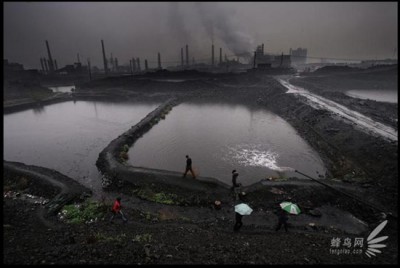excalibur
Diamond Member
- Mar 19, 2015
- 18,138
- 34,343
- 2,290
Will we learn? Or will we be Bidenized?
Germany’s wind power transition has hit the wall: rural Germans are sick and tired of the noise, ruined landscapes and communities; and Germans of all persuasions are fed up with Europe’s highest power prices, which continue to rocket as a consequence of its so-called ‘renewable energy transition’ aka the ‘Energiewende’.
Thanks to massive subsidies and mandated targets, over 30,000 of these things have been speared into every last corner of Deutschland. But, as the team from Jo Nova explain below, the backlash against industrial wind power has brought the German wind industry to a shuddering halt.
Is this the future of wind all over the world?
The salad days of wind power in Germany are over. Bad news is rolling in from several directions. Twenty years of hope-n-subsidies has run aground. Profits are grinding down, and hardly any new towers are being erected. People are fighting back against the noise, the views, and the bird chopping. Conservationists might like the idea of wind, as long as it’s in someone else’s forest. Suddenly groups that oppose wind towers are gaining traction, and the red tape and legal battles have grown wings and settled on new developments like a bat plague.
New turbines are now supposed to be two kilometers from any home, and there just isn’t enough spare land to build them on. German wind farms are running out of Germany.
If only they were profitable and provided an essential service, they might still have friends.
...

 stopthesethings.com
stopthesethings.com
Germany’s wind power transition has hit the wall: rural Germans are sick and tired of the noise, ruined landscapes and communities; and Germans of all persuasions are fed up with Europe’s highest power prices, which continue to rocket as a consequence of its so-called ‘renewable energy transition’ aka the ‘Energiewende’.
Thanks to massive subsidies and mandated targets, over 30,000 of these things have been speared into every last corner of Deutschland. But, as the team from Jo Nova explain below, the backlash against industrial wind power has brought the German wind industry to a shuddering halt.
Is this the future of wind all over the world?
The salad days of wind power in Germany are over. Bad news is rolling in from several directions. Twenty years of hope-n-subsidies has run aground. Profits are grinding down, and hardly any new towers are being erected. People are fighting back against the noise, the views, and the bird chopping. Conservationists might like the idea of wind, as long as it’s in someone else’s forest. Suddenly groups that oppose wind towers are gaining traction, and the red tape and legal battles have grown wings and settled on new developments like a bat plague.
New turbines are now supposed to be two kilometers from any home, and there just isn’t enough spare land to build them on. German wind farms are running out of Germany.
If only they were profitable and provided an essential service, they might still have friends.
...

Energy Transition: Germans Revolt Against Wind Power – As Power Prices Spiral Out of Control
Germany’s wind power transition has hit the wall: rural Germans are sick and tired of the noise, ruined landscapes and communities; and Germans of all persuasions are fed up with Europe’s highest p…





